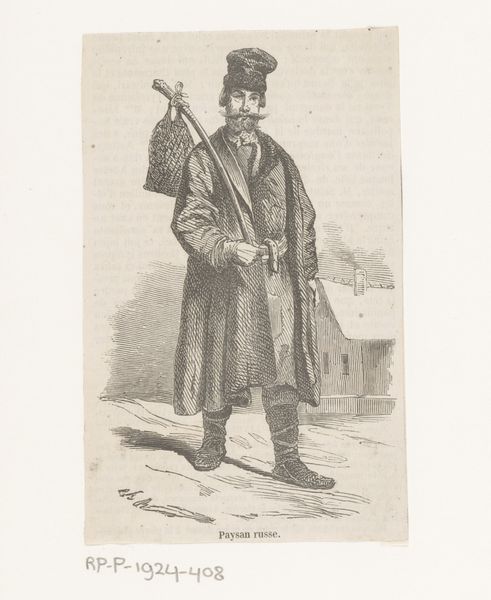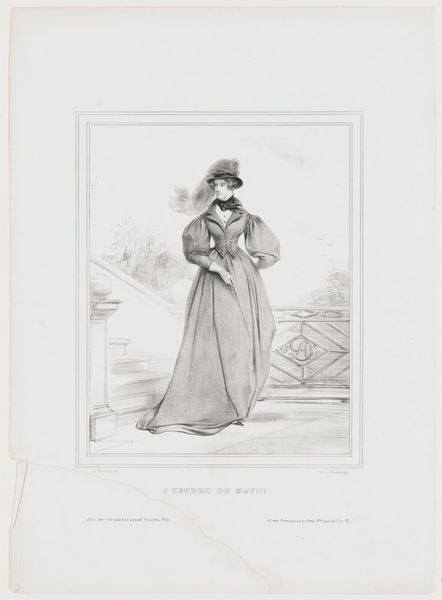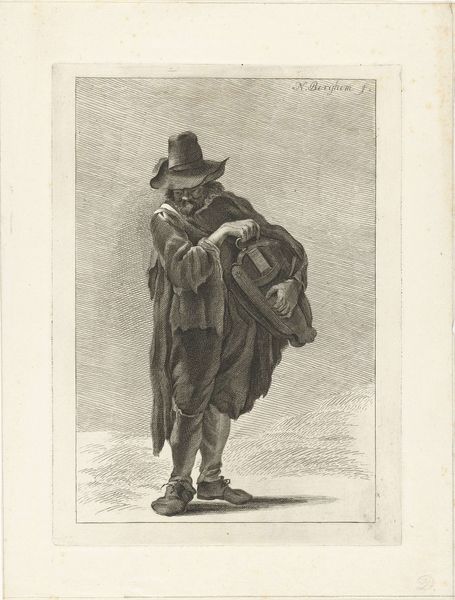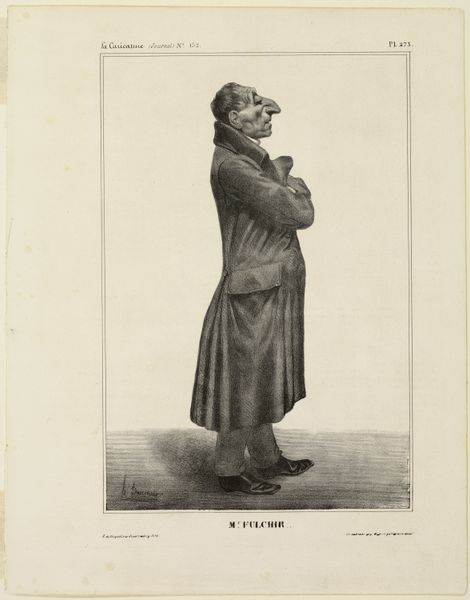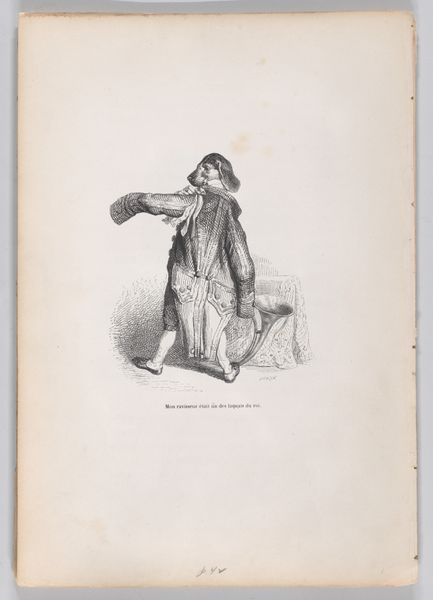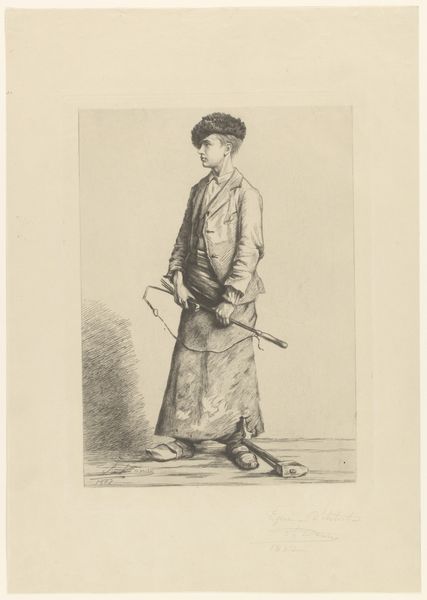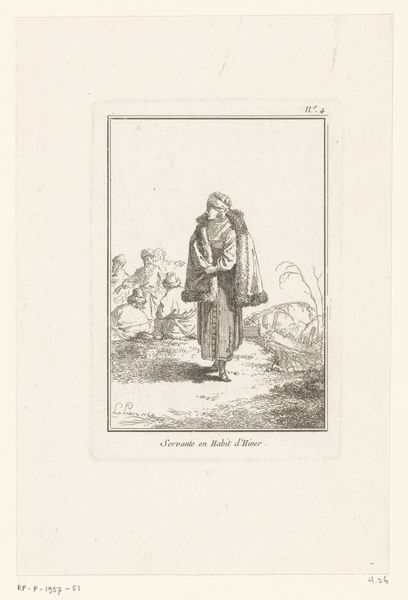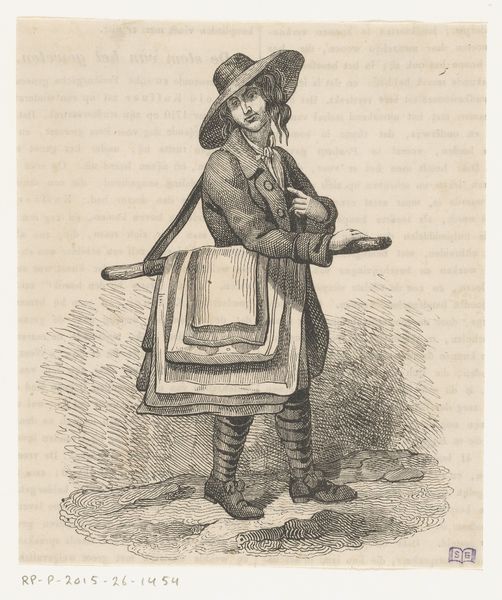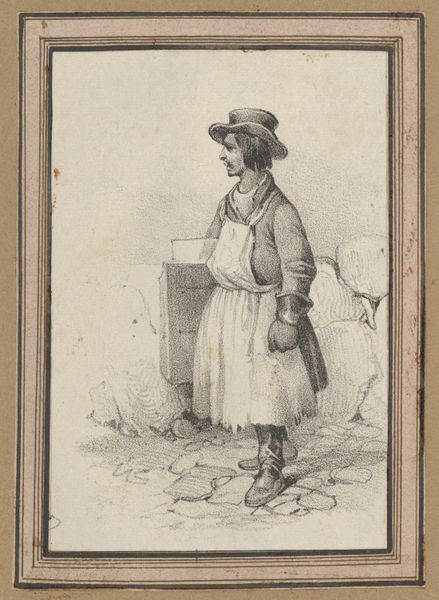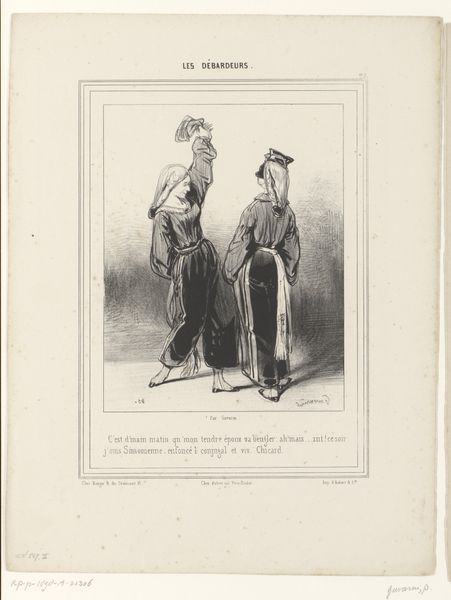
print, engraving
#
medieval
# print
#
old engraving style
#
genre-painting
#
engraving
#
realism
Dimensions: height 122 mm, width 80 mm
Copyright: Rijks Museum: Open Domain
Curator: Let's turn our attention to "Broodverkoper," or "Bread Seller," a genre print attributed to Ch. Reboul, dating sometime between 1826 and 1899. Editor: It’s immediately striking; the repetitive lines used in the engraving create an atmosphere that is both precise and slightly disorienting. It lends an almost alienating effect, even for such a seemingly mundane subject. Curator: Indeed. Notice how Reboul utilizes the density and direction of these lines to sculpt the form of the bread seller. The diagonal hatching across his coat contrasts sharply with the vertical lines of his underdress, giving depth. Semiotically, each line functions almost like a unit of information. Editor: And who gets to have this information? We are seeing a worker, presumably anonymous, which underscores the stark economic realities present in 19th century Moscow, where class and social standing are written on people’s backs—sometimes, quite literally, it seems! The formal treatment flattens any individual identity, rendering the seller a type. Curator: Perhaps. Yet, the very act of meticulously portraying the "type" elevates it. Observe how the contrasting textures of the bread, the coat, and the hat play with the eye. The variations created are an articulation of the human condition. Editor: That articulation feels rooted in privilege. Reboul observes a social class presumably far beneath his own, creating this distanced portrayal of the "common man," rather than engaging with any specific individual in their complexity. Where’s the empathy? Curator: But can't we also see the labor and humanity within those very lines, etched painstakingly into the plate? Editor: The labor is clear. As for the humanity, I wonder if it's projected onto the work from us, the viewers, who hope to find some trace of it there. I keep returning to the individual obscured in the background - their story remains unheard entirely. Curator: Well, either way, the print exemplifies the artistic debates and social complexities inherent in representations of everyday life of the period. Editor: Agreed. The layers within what at first seems a rather simple print make it more compelling to contemplate its history and possible meanings, who knows whose story could it be, not told directly, only represented!
Comments
No comments
Be the first to comment and join the conversation on the ultimate creative platform.
